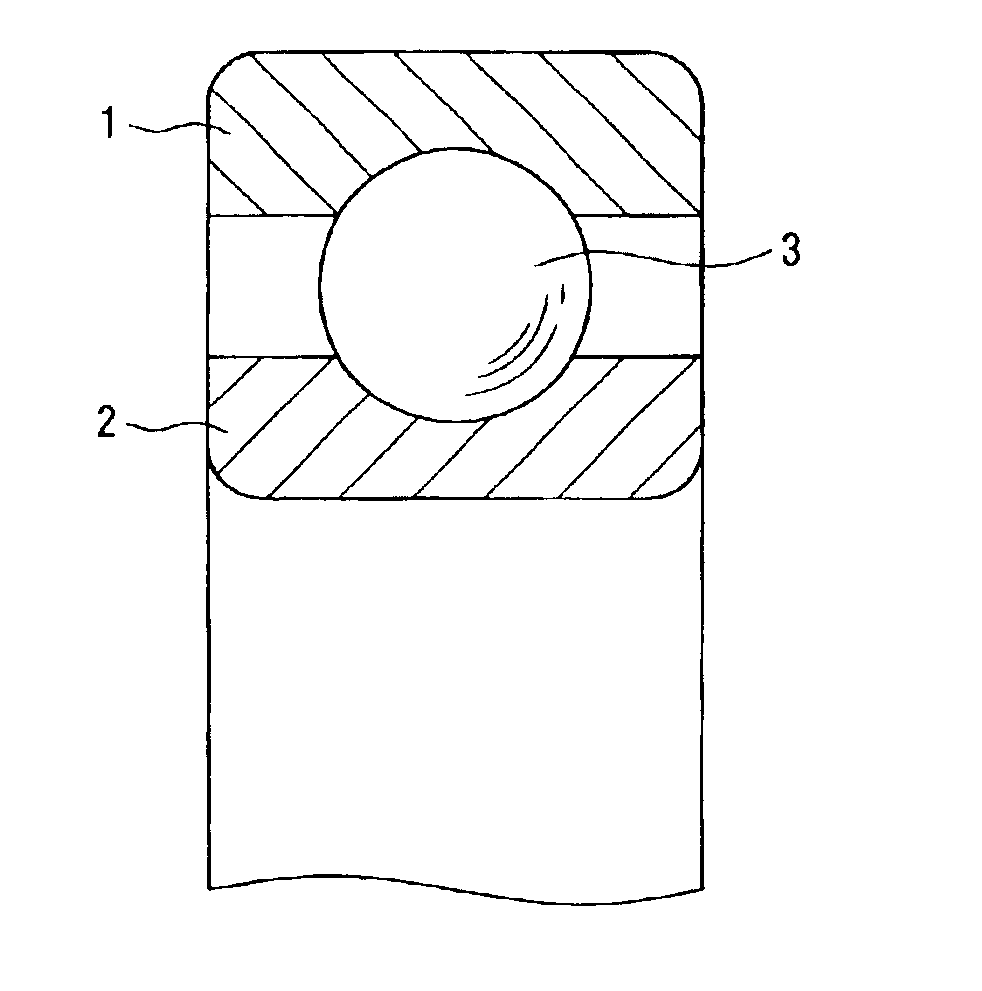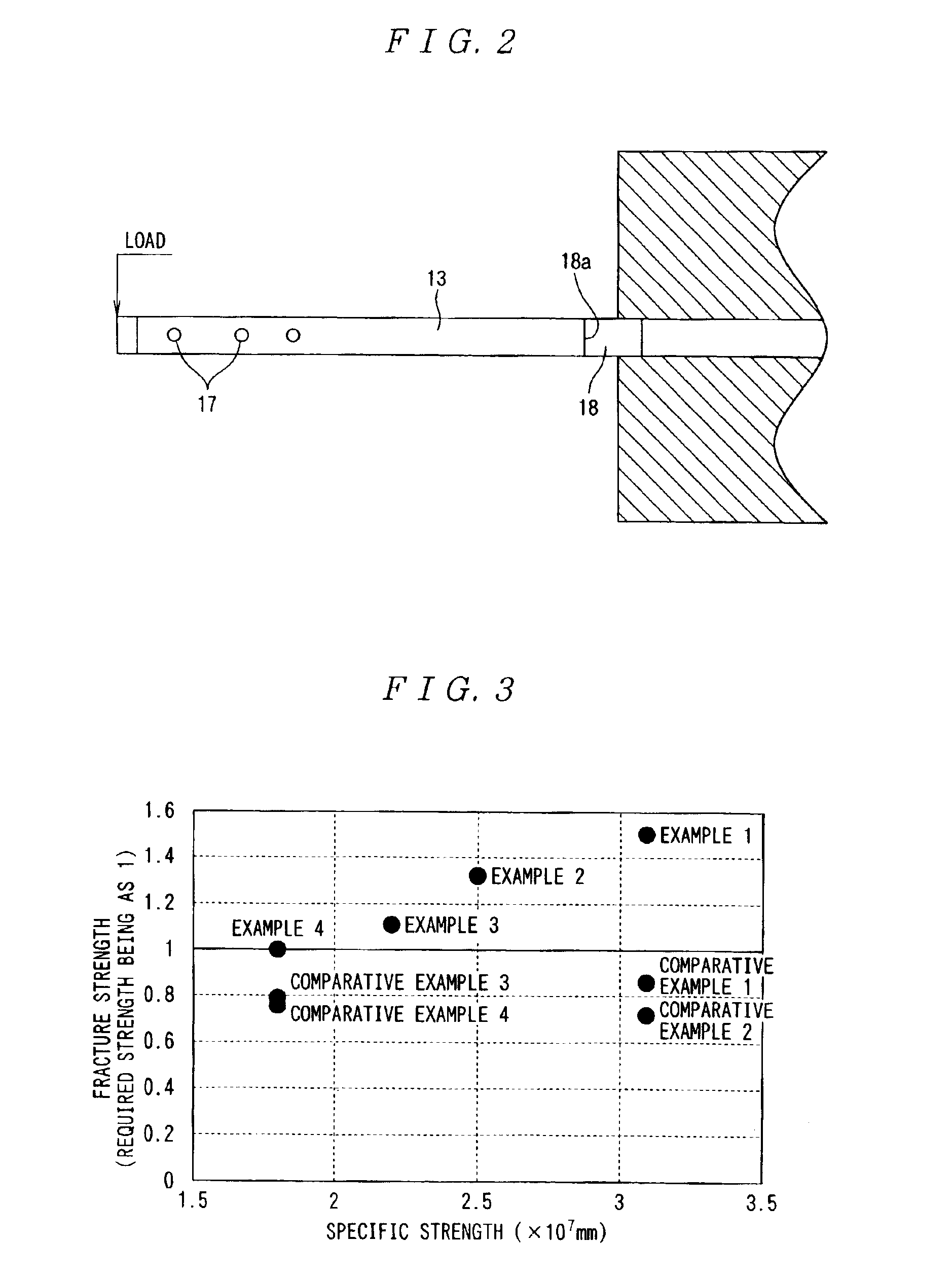Rolling device
a technology of rolling device and guide rail, which is applied in the direction of bearings, shafts and bearings, bearings, etc., can solve the problems of guide rail fracture, difficulty in application and inapplicability to the electronic part mounting apparatus or the wire bonding apparatus described above. , to achieve the effect of increasing the cos
- Summary
- Abstract
- Description
- Claims
- Application Information
AI Technical Summary
Benefits of technology
Problems solved by technology
Method used
Image
Examples
embodiment 1
[Embodiment 1]
FIG. 1 is a view showing a linear motion guiding device as an embodiment of a rolling device according to this invention. In the drawing, reference numeral 10 denotes an electronic part suction head, and 11 denotes a head lifting mechanism for vertically reciprocating the electronic part suction head 10, in which the head lifting mechanism 11 comprises a driving device (not illustrated) and a plurality of linear motion guiding devices 12 disposed at the periphery of the driving device.
The linear motion guiding device 12 comprises a guide rail 13 as a support or a movable member, spherical rolling elements 14 and sliders 15A and 15B as a movable member or a support, and rolling grooves 16 of rolling element are formed on both lateral sides of the guide rail 13 along the longitudinal direction of the guide rail 13. The rolling groove 16 of rolling element is used for guiding the spherical rolling elements 14 in the longitudinal direction of the guide rail 13 and has a su...
embodiment 2
[Embodiment 2]
FIG. 21 is a fragmentary vertical cross sectional view showing the structure of a deep groove ball bearing as an embodiment of a rolling device according to this invention.
The ball bearing comprises an outer ring 1, an inner ring 2, a plurality of balls 3 disposed rotationally between the outer ring 1 and the inner ring 2, and a snap cage formed of resin (not illustrated) for holding a plurality of balls. In this case, the outer ring 1 corresponds to the support as a constituent factor of the invention and the inner ring 2 corresponds to the movable member as a constituent factor of the invention.
All of the outer ring 1, the inner ring 2 and the ball 3 are constituted with ceramic material, cermet or cemented carbide. The specific strength of the ceramic material, the cermets and the cemented carbide is 1.2×107 mm or more. Further, the thermal impact resistance value of the ceramic material, the cermet and the cemented carbide is 1.5 times or more of the working circum...
embodiment 3
[Embodiment 3]
FIG. 26 shows a rolling bearing as a rolling device according to this embodiment in which rolling elements 3 are interposed between a raceway surface 1a of an inner ring 1 (guiding surface) and a raceway surface 2a (guiding surface) of an outer ring 2.
The outer ring 2 is attached to a housing 4 to constitute a support and the inner ring 1 is secured to the shaft 5 to constitute a movable member.
The inner ring 1 and the outer ring 2 are formed of bearing steels such as SUJ2 or SUS4040C.
Further, the rolling element 3 is formed of a ceramic material or a cemented carbide, and each of the ratio of the linear expansion coefficient of the rolling element 3 to the inner ring 1 and the ratio of the linear expansion coefficient of the rolling element 3 to the outer ring 2 is set to 0.45 or less by selecting the ceramic material or the cemented carbide.
In the rolling bearing having the constituent described above, the thermal expansion amount of the rolling element 3 is outstand...
PUM
| Property | Measurement | Unit |
|---|---|---|
| fracture toughness | aaaaa | aaaaa |
| particle size | aaaaa | aaaaa |
| fracture toughness | aaaaa | aaaaa |
Abstract
Description
Claims
Application Information
 Login to View More
Login to View More - R&D
- Intellectual Property
- Life Sciences
- Materials
- Tech Scout
- Unparalleled Data Quality
- Higher Quality Content
- 60% Fewer Hallucinations
Browse by: Latest US Patents, China's latest patents, Technical Efficacy Thesaurus, Application Domain, Technology Topic, Popular Technical Reports.
© 2025 PatSnap. All rights reserved.Legal|Privacy policy|Modern Slavery Act Transparency Statement|Sitemap|About US| Contact US: help@patsnap.com



